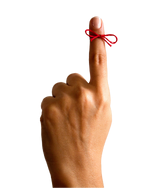(suite du dossier…)
Un peu d’histoire
Le livre est quelque chose de bien ancré dans nos vies en général : qu’on soit lecteur de littérature ancienne, amateur de littérature policière ou simplement assidu au journal quotidien, la lecture fait partie de nos vies. La technologie qui permet cette lecture a évolué et elle est au bord d’une révolution numérique. On peut même dire que cette révolution est déjà bien démarrée.
Pour mieux comprendre l’évolution technologique du livre, il est important d’en comprendre les origines.
Je ne vais pas préciser ici sur les débuts de l’écriture, mais ils sont intimement liés avec la création d’un support pour en préserver des traces. Que ce soit sur de la pierre, du bois, des tablettes d’argiles ou même des feuilles séchées, le désir de créer un support durable est au coeur de la création du livre. On a attendu la fin de l’Antiquité pour voir apparaître le codex, qui est réellement l’ancêtre du livre. On mettait alors de côté les parchemins roulés et on attachait désormais des feuillets par une reliure. Il était donc plus facile de déposer le document sur une table et de l’ouvrir. Ceci n’était qu’une étape puisque d’autres innovations ont suivi pour toujours faciliter la lecture. Majuscules, ponctuation et table des matières, par exemple, ont rendu le codex encore plus pratique et ainsi mis en place les bases de notre livre actuel. Plus de 1500 ans plus tard, ces innovations font toujours partie de nos vies.
L’idée de numériser un livre remonte en 1971 avec le projet Gutenberg. Il n’était pas encore question de livre numérique, mais de numérisation d’un livre papier pour le rendre disponible sur un ordinateur. On remonte aux balbutiements du réseau Internet. Le premier livre retranscrit sur un ordinateur a été la Déclaration d’indépendance des États-Unis.
La naissance du numérique
La naissance des appareils numériques remonte à beaucoup moins longtemps que celle du livre, mais elle remonte à plus longtemps qu’on pourrait le penser. Le numérique est associé au nombre. Le calcul numérique se fait avec des chiffres tandis que le calcul algébrique se fait avec des variables. On a donc créé un langage composé de deux chiffres, plus spécifiquement du 1 et du 0. Ce langage binaire spécifie une ouverture ou une fermeture. Dans un appareil, cette combinaison de 1 et de 0 permet la circulation de l’électricité dans les circuits et ainsi la création d’un résultat compréhensible pour l’ordinateur qui traite l’information. Cette information est ensuite décodée et lisible pour nous.
Le premier appareil de communication numérique remonte à la fin du 18e siècle avec l’invention du télégraphe. Son concept était simple. On communiquait en établissant ou en interrompant un courant électrique en se basant sur un code préalablement mis en place. Il est donc faux de dire que l’invention des appareils numériques est récente! Une multitude de problèmes techniques a freiné l’utilisation du télégraphe et la communication numérique a été remplacée vers la fin du 19e siècle par le fameux téléphone analogique d’Alexandre Graham Bell. Il faudra attendre la fin des années 1940 et l’invention des premiers ordinateurs pour un retour du numérique. C’est dans ce contexte que vont être inventés les transistors, agissant comme des interrupteurs dans les premiers circuits électriques pour faire passer du courant électrique (1) ou l’interrompre (0). À l’origine, ces premiers circuits étaient très gros, mais la conquête spatiale a permis un effort de miniaturisation phénoménal. Cette évolution vers des objets toujours plus petits a fait que nous avons aujourd’hui des téléphones intelligents avec une puissance brute équivalente à celle du module lunaire Apollo!
Plan du dossier :
– Qu’est-ce qu’un livre numérique?
Un peu d’histoire
La naissance du numérique
– Les formats de livres numériques
Les formats générés par traitement de texte
Le format de document multiplateforme (PDF)
Le langage HTML
Le format EPUB
Les formats propriétaires pour liseuses
Comment choisir le bon format
– Créer votre livre numérique
Le traitement de texte
Éditeurs spécialisés
– Quelques exemples de livres numériques en milieu scolaire
Références et ressources utiles




 Recevez l'Info #DevProf et l'Hebdo pour ne rien manquer des nouveautés de l'École branchée!
Recevez l'Info #DevProf et l'Hebdo pour ne rien manquer des nouveautés de l'École branchée!




